
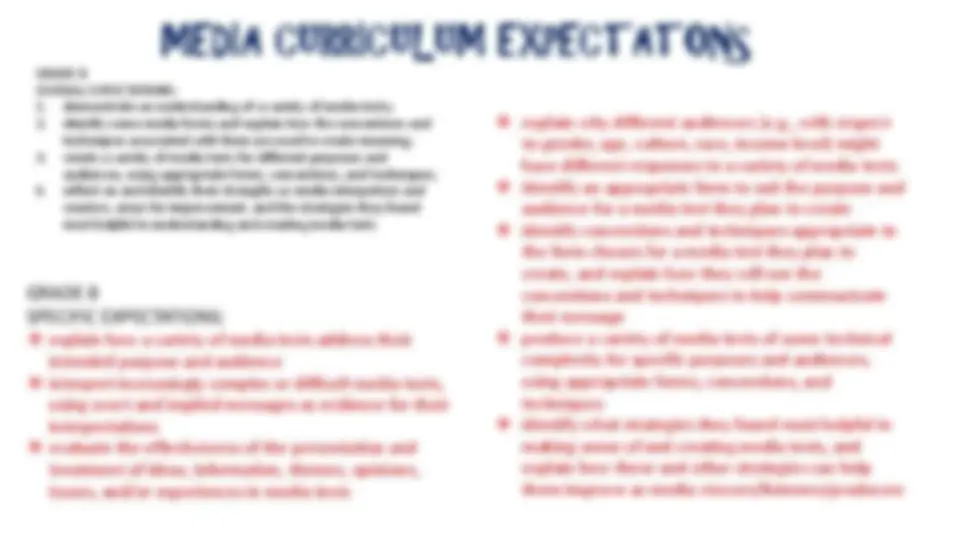
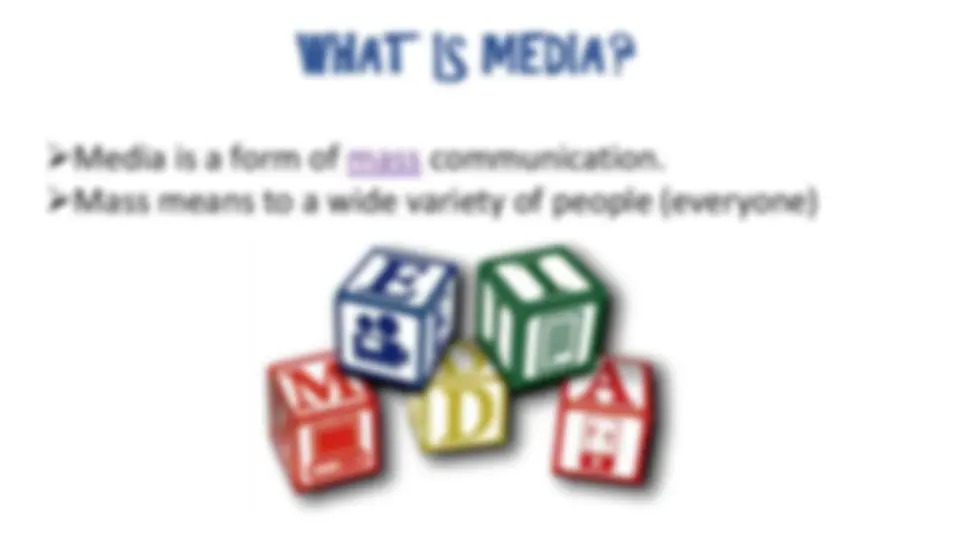
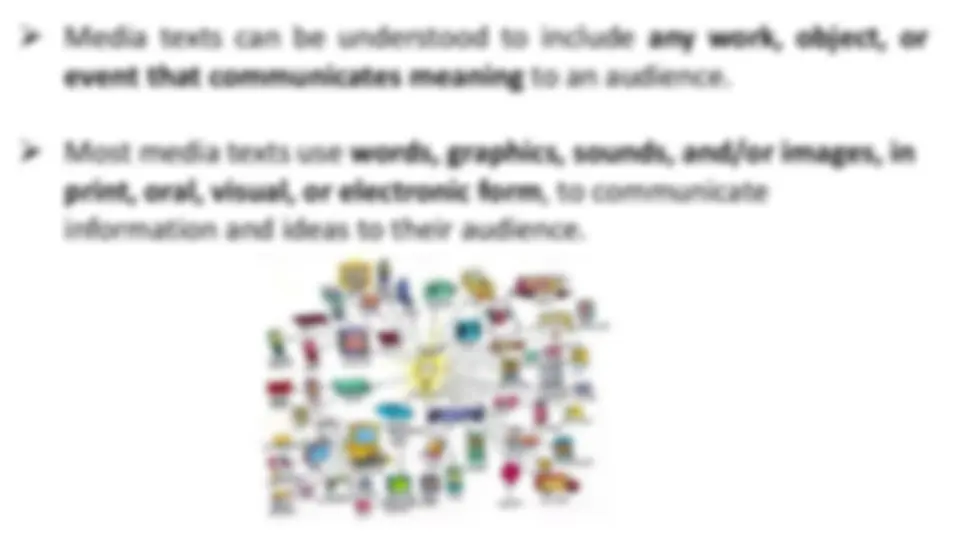
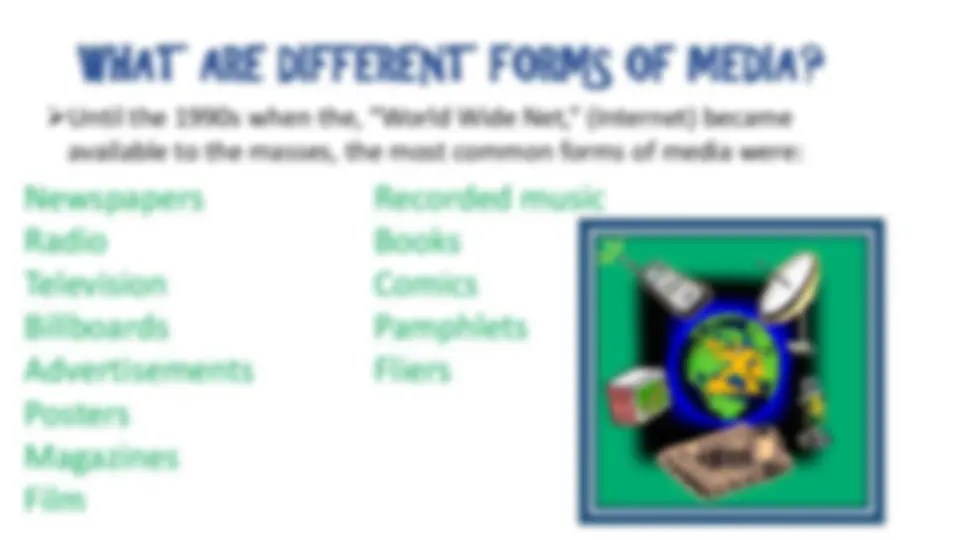
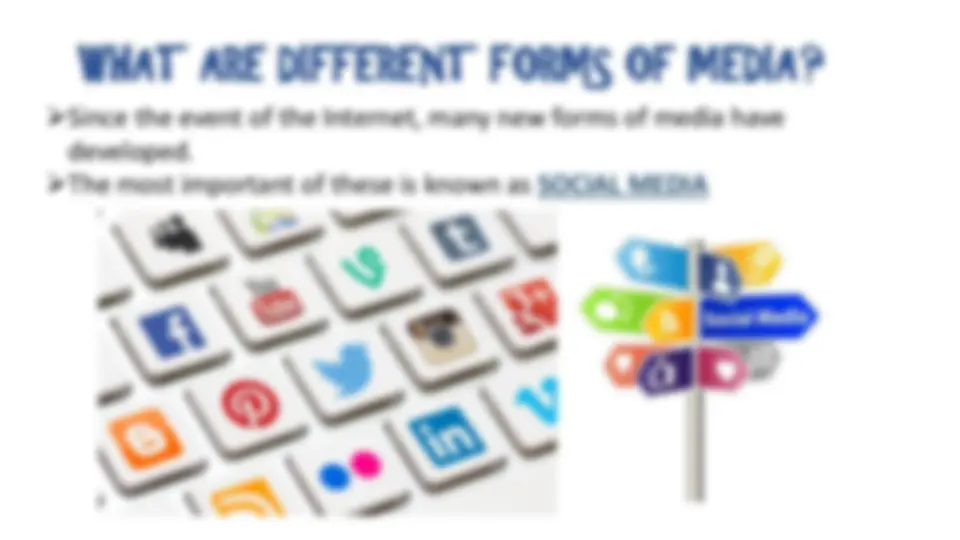
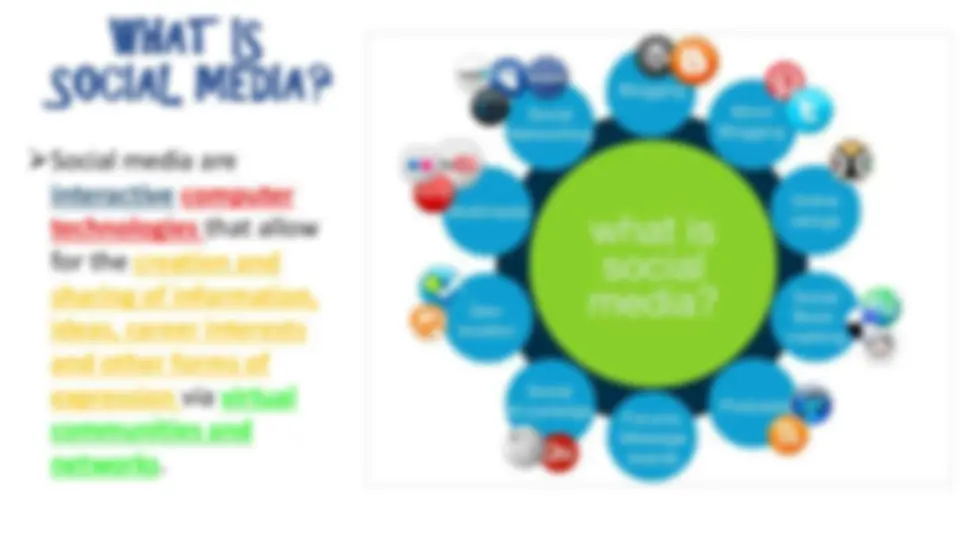
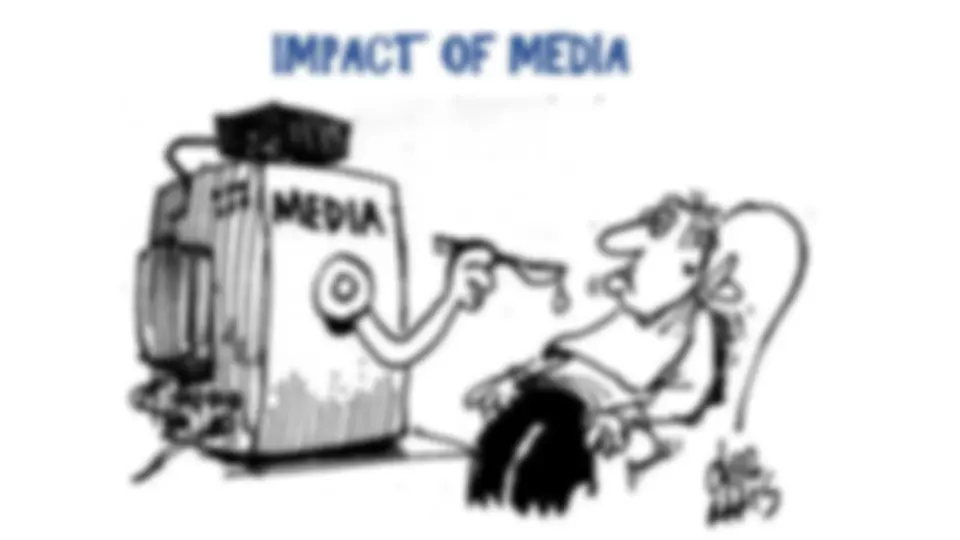
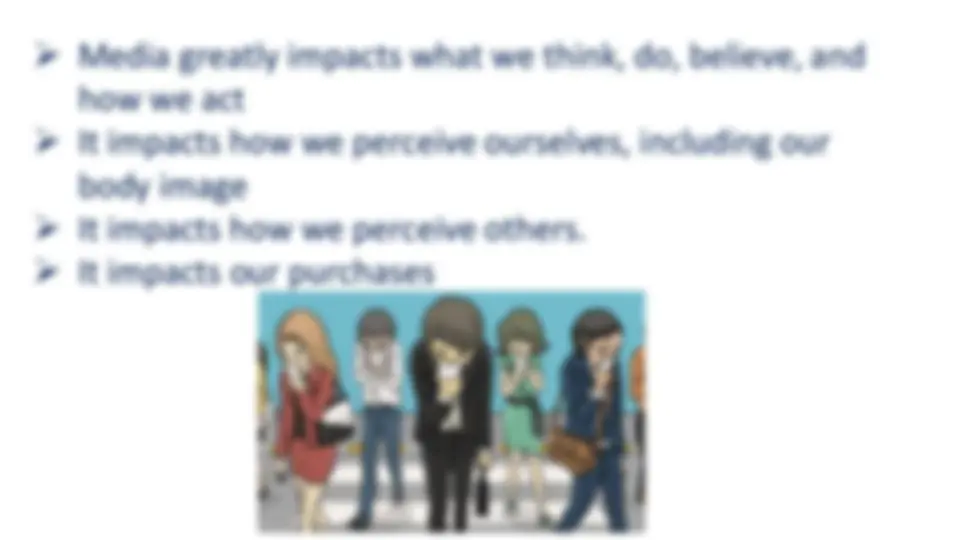
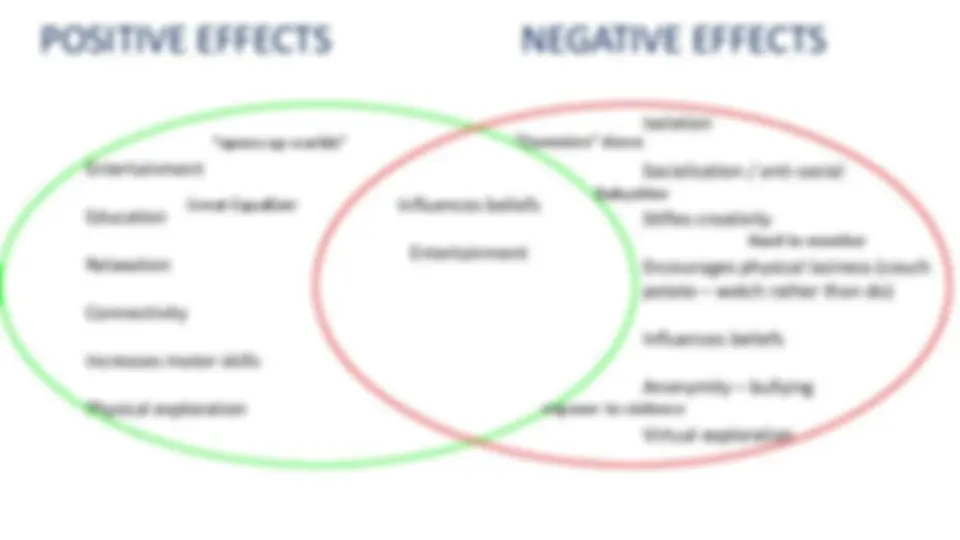
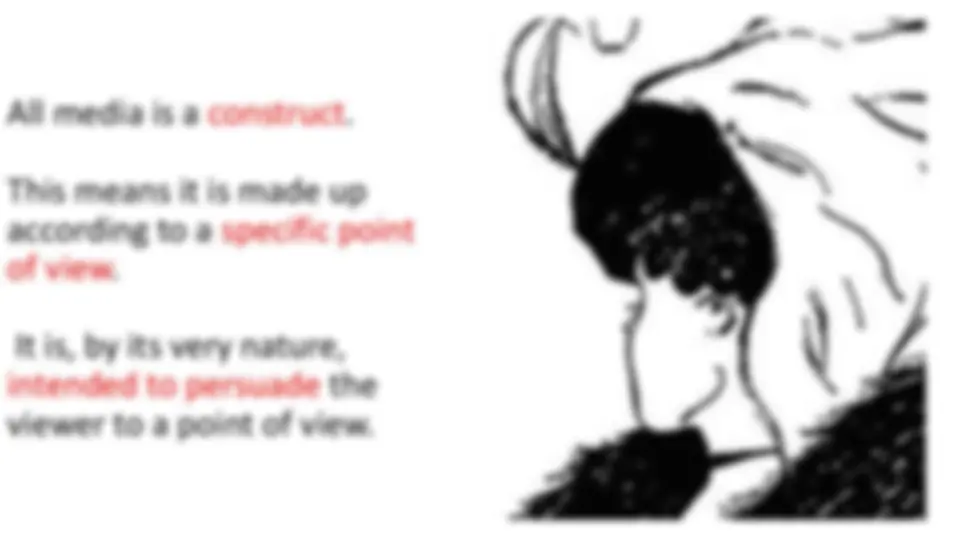

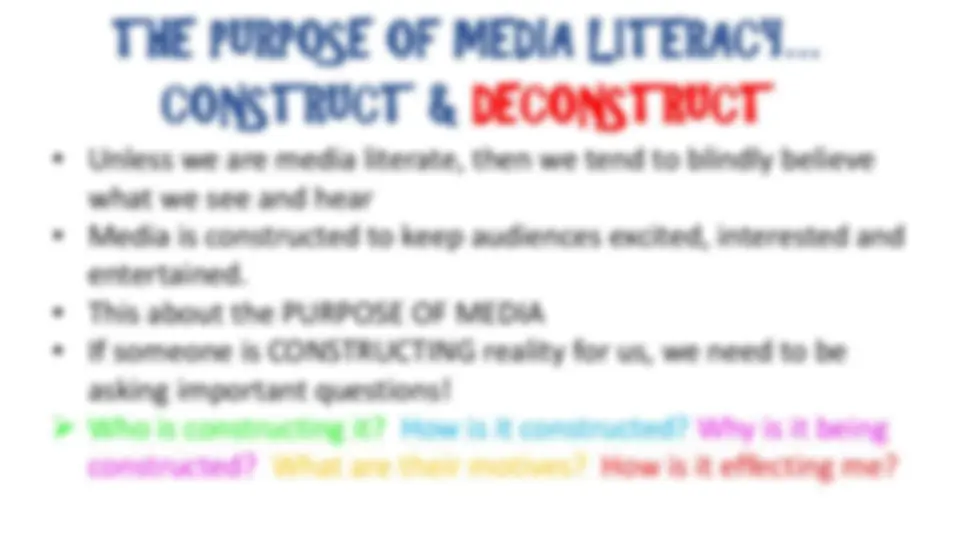
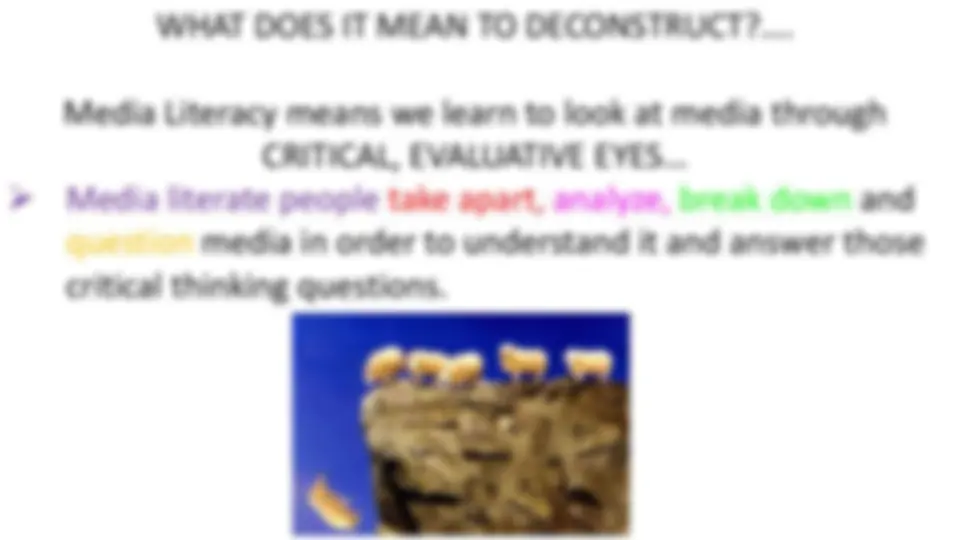
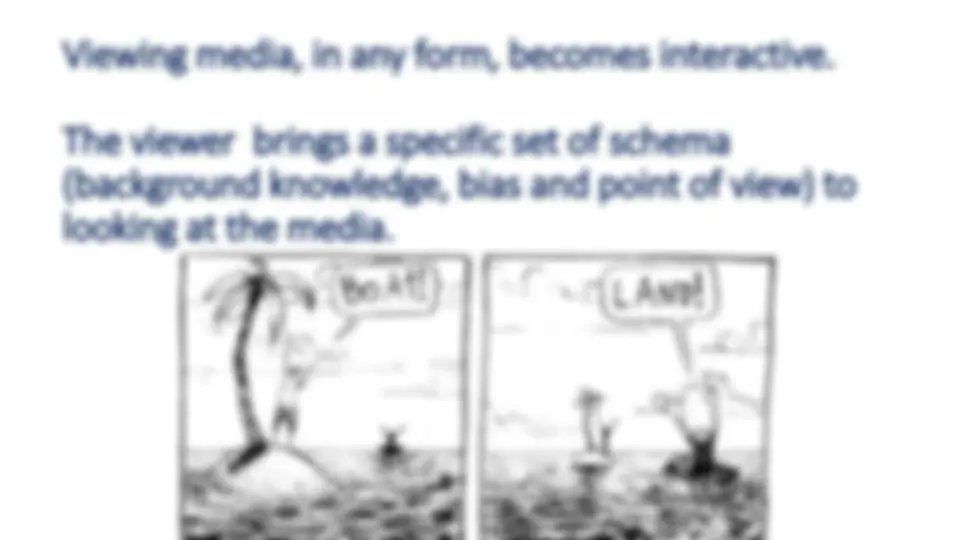

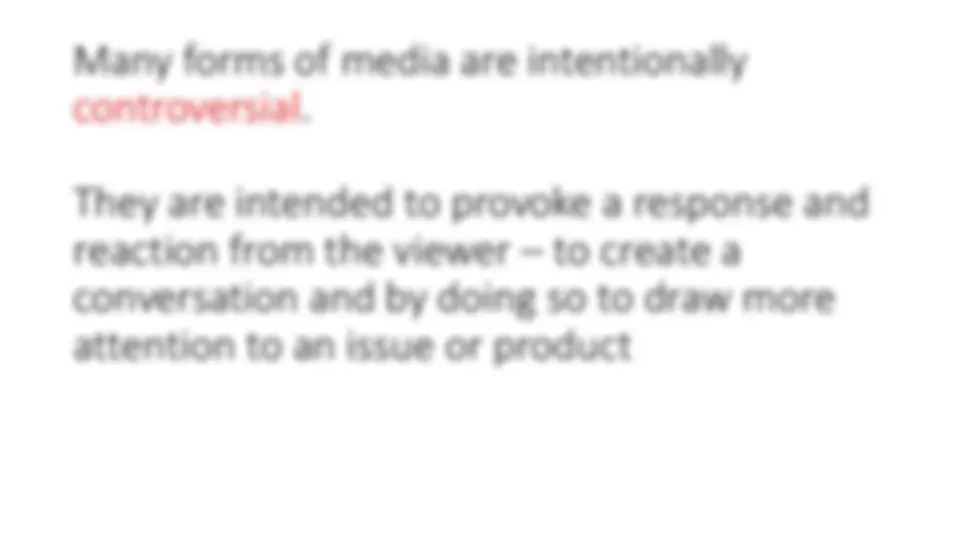
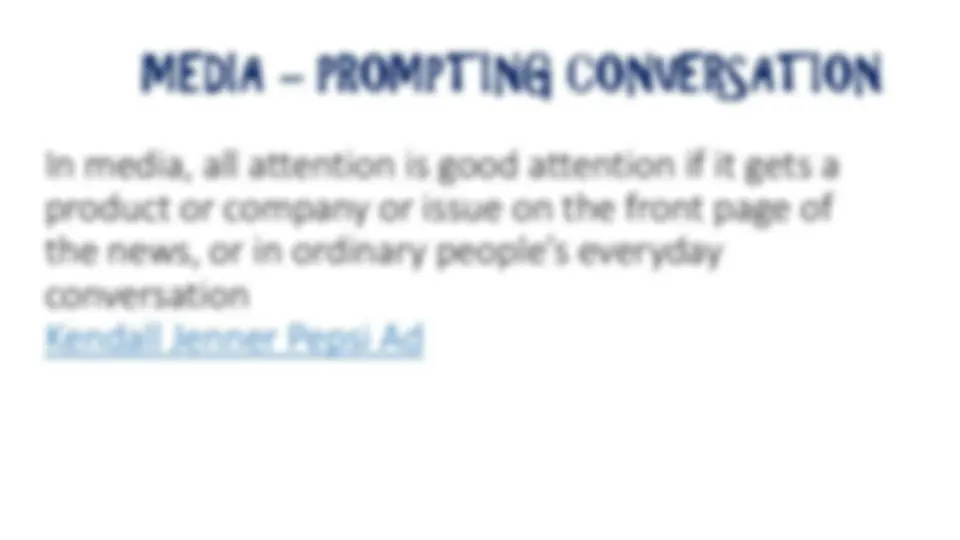

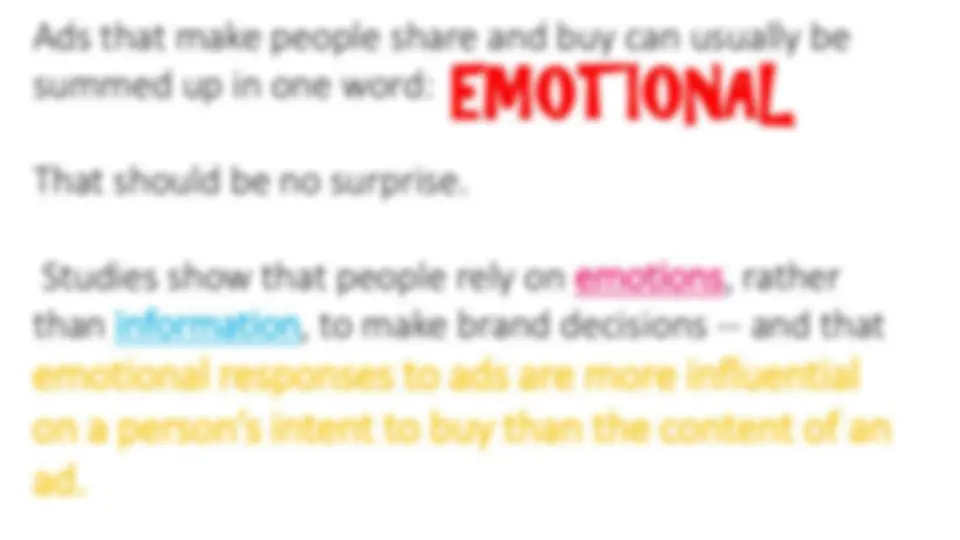
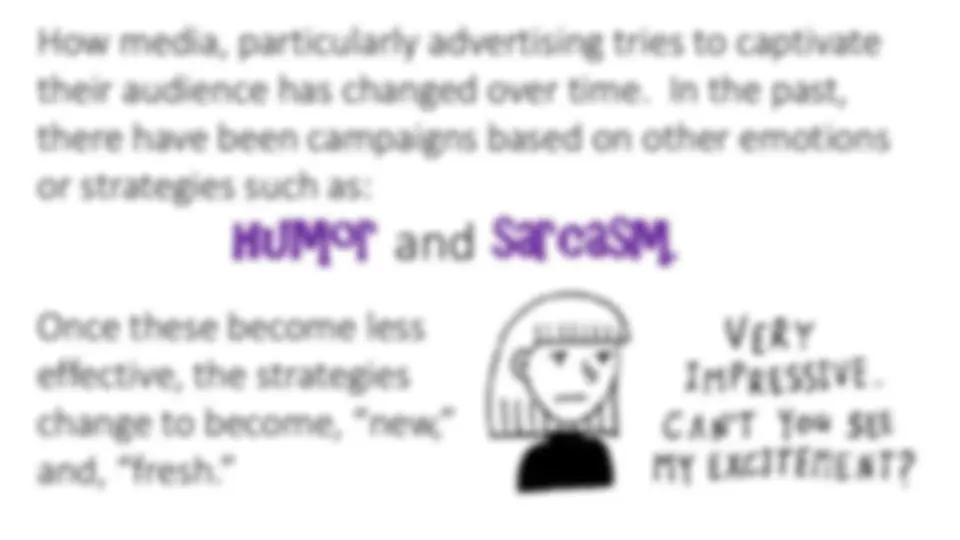
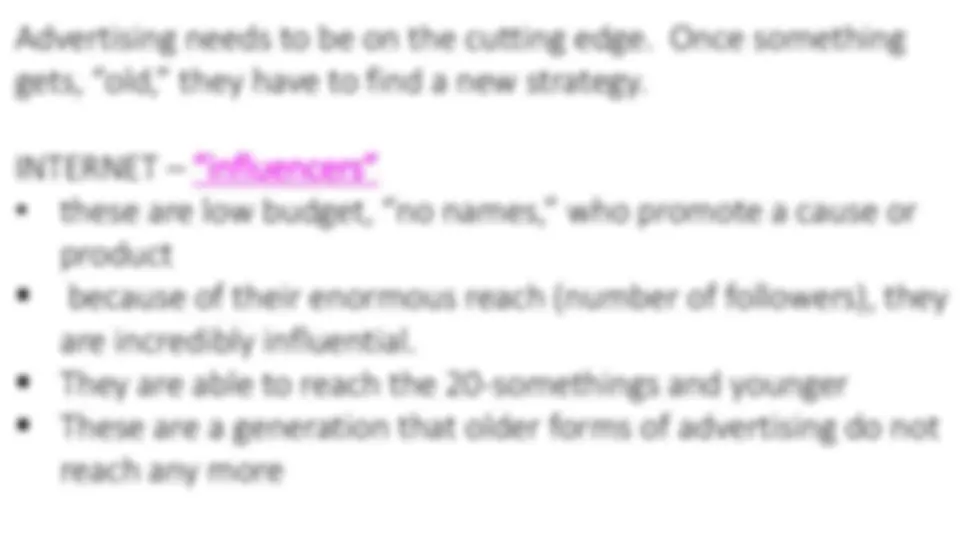

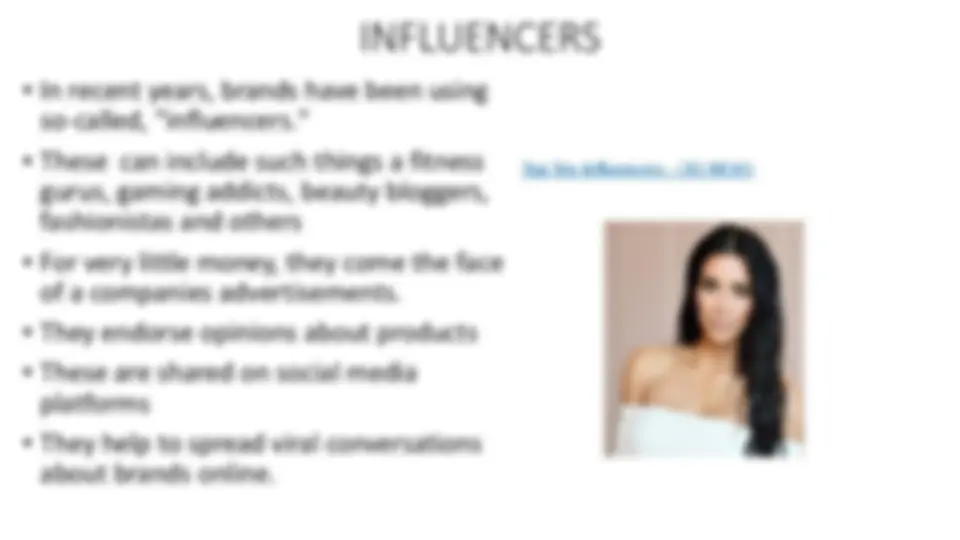
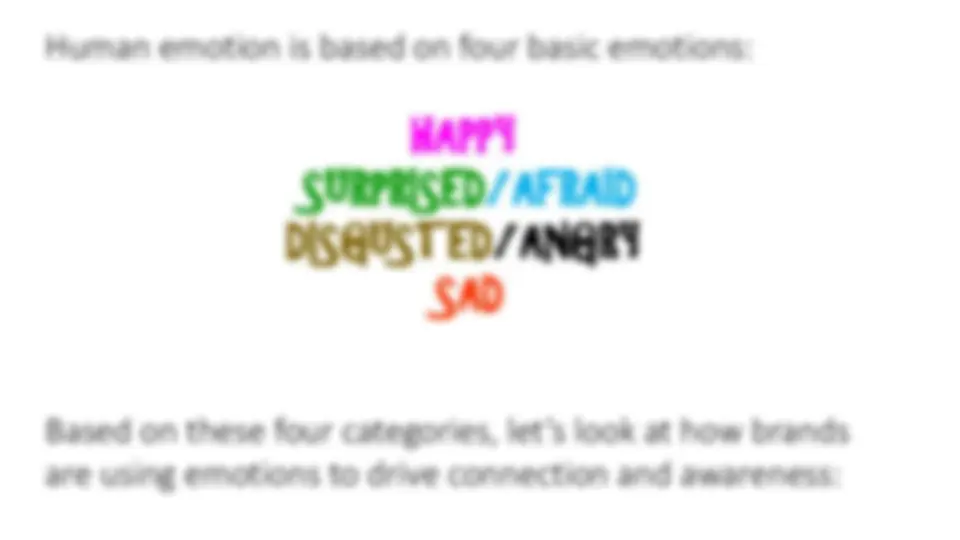



Study with the several resources on Docsity

Earn points by helping other students or get them with a premium plan


Prepare for your exams
Study with the several resources on Docsity

Earn points to download
Earn points by helping other students or get them with a premium plan
Community
Ask the community for help and clear up your study doubts
Discover the best universities in your country according to Docsity users
Free resources
Download our free guides on studying techniques, anxiety management strategies, and thesis advice from Docsity tutors
An overview of media, its various forms throughout history, and its impact on individuals and society. It also introduces the concept of media literacy and its importance in critically evaluating media messages.
Typology: Summaries
1 / 33

This page cannot be seen from the preview
Don't miss anything!


























GRADE 7
OVERALL EXPECTATIONS:
techniques associated with them are used to create meaning;
audiences, using appropriate forms, conventions, and techniques;
creators, areas for improvement, and the strategies they found
most helpful in understanding and creating media texts
evaluate the effectiveness of the presentation and
treatment of ideas, information, themes, opinions,
issues, and/or experiences in media texts
explain why different audiences (e.g., with respect
to gender, age, nationality, ability/disability income
level) might have different responses to a variety of
media texts
identify the conventions and techniques used in a
variety of media forms and explain how they help
convey meaning and influence or engage the
audience
explain why they have chosen the topic for a media
text they plan to create
explain how individual elements of various media
forms combine to create, reinforce, and/or enhance
meaning
produce a variety of media texts of some technical
complexity for specific purposes and audiences,
using appropriate forms, conventions, and
techniques
explain how various media texts address their
intended purpose and audience
interpret increasingly complex or difficult media texts,
using overt and implied messages as evidence for their
interpretations
evaluate the effectiveness of the presentation and
treatment of ideas, information, themes, opinions,
issues, and/or experiences in media texts
Media is a form of mass communication.
Mass means to a wide variety of people (everyone)
WHAT IS MEDIA?
Media texts can be understood to include any work, object, or
event that communicates meaning to an audience.
Most media texts use words, graphics, sounds, and/or images, in
print, oral, visual, or electronic form , to communicate
information and ideas to their audience.
WHAT ARE DIFFERENT FORMS OF MEDIA?
In ancient Greek and Roman times, media took the form of public
proclamations, which were read aloud in public places and also posted
for all who could read, to read.
This continued to be true well into the early 1900s where we had Town
Criers who read out important news from public places
WHAT ARE DIFFERENT FORMS OF MEDIA?
Until the 1990s when the, “World Wide Net,” (Internet) became
available to the masses, the most common forms of media were:
Newspapers
Radio
Television
Billboards
Advertisements
Posters
Magazines
Film
Recorded music
Books
Comics
Pamphlets
Fliers
WHAT IS
SOCIAL MEDIA?
Social media are
interactive computer
technologies that allow
for the creation and
sharing of information,
ideas, career interests
and other forms of
expression via virtual
communities and
networks.
Marshall McLuhan
Marshall McLuhan (1911–1980) was a Canadian educator and philosopher,
whose work is seen as one of the most important ones in understanding the
impact of media in our world.
McLuhan is known for the expressions “the medium is the message” and
“global village”.
IMPACT OF MEDIA
Media greatly impacts what we think, do, believe, and
how we act
It impacts how we perceive ourselves, including our
body image
It impacts how we perceive others.
It impacts our purchases
CONSTRUCT & DECONSTRUCT
THE PURPOSE OF MEDIA LITERACY…
what we see and hear
entertained.
asking important questions!
Who is constructing it? How is it constructed? Why is it being
constructed? What are their motives? How is it effecting me?